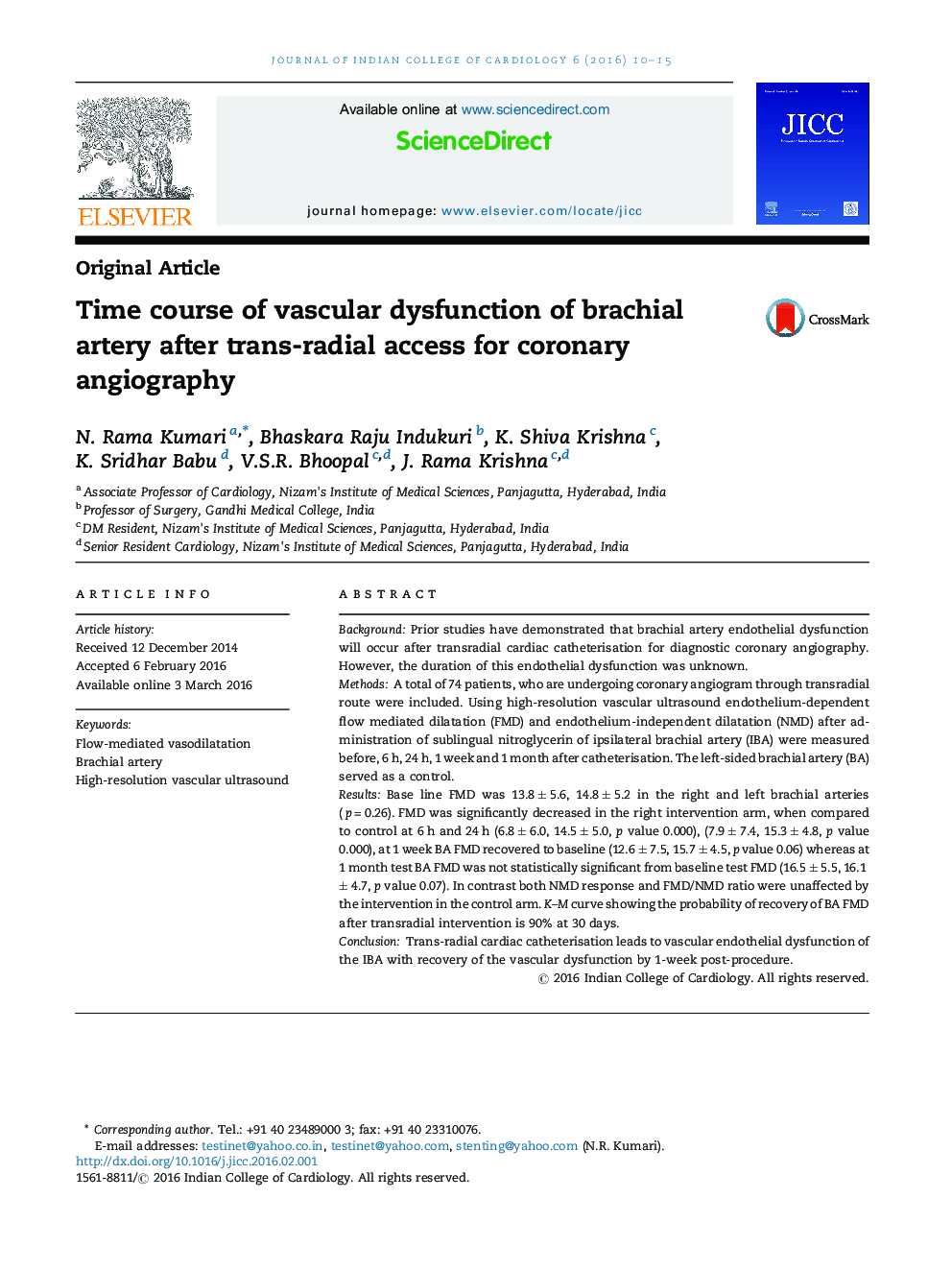| Article ID | Journal | Published Year | Pages | File Type |
|---|---|---|---|---|
| 2973669 | Journal of Indian College of Cardiology | 2016 | 6 Pages |
BackgroundPrior studies have demonstrated that brachial artery endothelial dysfunction will occur after transradial cardiac catheterisation for diagnostic coronary angiography. However, the duration of this endothelial dysfunction was unknown.MethodsA total of 74 patients, who are undergoing coronary angiogram through transradial route were included. Using high-resolution vascular ultrasound endothelium-dependent flow mediated dilatation (FMD) and endothelium-independent dilatation (NMD) after administration of sublingual nitroglycerin of ipsilateral brachial artery (IBA) were measured before, 6 h, 24 h, 1 week and 1 month after catheterisation. The left-sided brachial artery (BA) served as a control.ResultsBase line FMD was 13.8 ± 5.6, 14.8 ± 5.2 in the right and left brachial arteries (p = 0.26). FMD was significantly decreased in the right intervention arm, when compared to control at 6 h and 24 h (6.8 ± 6.0, 14.5 ± 5.0, p value 0.000), (7.9 ± 7.4, 15.3 ± 4.8, p value 0.000), at 1 week BA FMD recovered to baseline (12.6 ± 7.5, 15.7 ± 4.5, p value 0.06) whereas at 1 month test BA FMD was not statistically significant from baseline test FMD (16.5 ± 5.5, 16.1 ± 4.7, p value 0.07). In contrast both NMD response and FMD/NMD ratio were unaffected by the intervention in the control arm. K–M curve showing the probability of recovery of BA FMD after transradial intervention is 90% at 30 days.ConclusionTrans-radial cardiac catheterisation leads to vascular endothelial dysfunction of the IBA with recovery of the vascular dysfunction by 1-week post-procedure.
